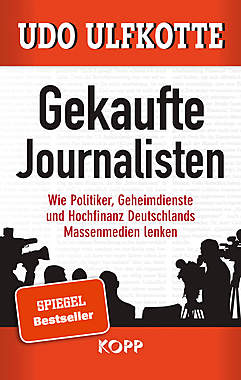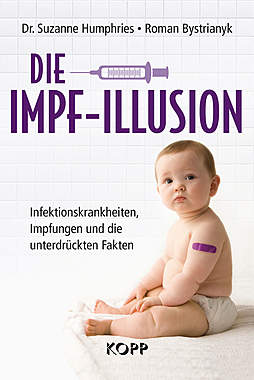- PflichtlektÞre: Byron Wien's legendere Liste der"zehn Ãberraschungen" - T. Mai, 06.01.2006, 09:52
- Re: PflichtlektÞre: Byron Wien's legendere Liste der"zehn Ãberraschungen" - Nachfrager, 06.01.2006, 10:15
- Re: PflichtlektÞre: Byron Wien's legendere Liste der"zehn Ãberraschungen" - T. Mai, 06.01.2006, 15:50
- Re: PflichtlektÞre: Byron Wien's legendere Liste der"zehn Ãberraschungen" - Nachfrager, 06.01.2006, 10:15
PflichtlektÞre: Byron Wien's legendere Liste der"zehn Ãberraschungen"
--><font size="4">PflichtlektÞre zu jedem Jahresbeginn an der Wall Street</font>
Byron Wien Announces Ten Surprises for 2006; Pequot Capital Chief Investment Strategist Compiles 21st Annual List
Byron R. Wien, Chief Investment Strategist of Pequot Capital Management, Inc., today issued his list of Ten Surprises for 2006. Mr. Wien, who joined Pequot in December 2005 from Morgan Stanley, has issued his economic, financial market and political surprises annually since 1986. The 2006 list follows:
1. Although inventories increase early in the year, crude oil soars to $80 and agricultural and industrial commodities rise as well. In spite of this, the Consumer Price Index hovers near 2% because rents stay low, productivity continues to improve and wages remain under pressure.
2. The U.S. stock market has another lackluster year with the Standard and Poor's 500 declining 5% to below 1200. Investors worry that eroding U.S. competitiveness and shrinking profit margins will limit the attractiveness of American equities for a prolonged period.
3. Even though inflation remains tame, new Federal Reserve Chairman Ben Bernanke, continuing the historical practice of overshooting the trend, raises the Federal funds rate to 5% during the first half of 2006. Ten year U.S. Treasury yields stay below 4.5%, however, and the inversion of the yield curve alarms equity investors. Banks suffer, but insurance, brokers and diversified financials perform in what would seem to be a market unfriendly to interest-sensitive stocks.
4. In spite of their attractive valuations and broad support among strategists, large capitalization stocks fail to gain a position of market leadership. While cheap on an historical basis, they have trouble growing revenues meaningfully or improving margins and 2006 proves to be another tough year for multiple expansion generally. Medium capitalization stocks continue to show significant earnings increases, especially in technology and health care.
5. Enthusiasm for gold subsides. The price declines to $425 as the cost of storage discourages holders who grow impatient with the loss of momentum. With the dollar strong and inflation low, investors wonder what all the excitement in 2005 was all about. Gold's performance proves to be independent of other commodities.
6. The dollar continues to strengthen, rising 10% against the yen and the euro. While the trade and budget deficits fuel continued negative views of the U.S. currency, the favorable yield differential keeps overseas investors buying U.S. bonds.
7. International markets, which had outstanding performance in 2005, correct as corporate earnings fall short of projections. Investors worry that political risks are increasing in Latin America and slower growth in the U.S. will diminish demand for products from Asia. Australia and Canada buck the trend and continue to perform impressively.
8. Diminished exports to Europe and the United States cause China to back away from any further currency reevaluation plans. By keeping their currency undervalued they hope to revive overseas demand for their products. Providing jobs and industrializing the western half of the country are their primary objectives. To accomplish this they must continue to grow the economy at close to a 10% rate.
9. Stock markets around the world are sent reeling by one of the following: (a) a pandemic which starts in Asia but quickly spreads to Europe and the United States; (b) another terrorist attack in a major American city involving the loss of more than 100 lives. The risk premium for equities moves higher.
10. Mitt Romney emerges as the likely 2008 G.O.P. presidential candidate. Any Republican who can be elected governor in Massachusetts can't be all bad. Hillary Clinton gains traction with Democrats who were previously hostile toward her nomination. She seems like the only hope in a lackluster field.
Mr. Wien believes these surprises, which the consensus would assign only a one-in-three chance of happening, have at least a 50% probability of occurring at some point during the year. In previous years, more than half of the elements of the list have proven correct.
________________
Seit zwei Jahrzehnten verÃķffentlicht Byron Wien seine Liste der"zehn Ãberraschungen", die fÞr viele Investoren eine PflichtlektÞre ist. In diesem Jahr lautet eine seiner Ãberraschungen, daà der US-Benchmarkindex Standard & Poor's 500 fÞnf Prozent verliert.
Wien sieht den S&P 500 Ende 2006 unterhalb von 1200 ZÃĪhlern. Damit ist er lediglich noch in Gesellschaft von Abhijit Chakrabortti von JPMorgan, der den Index bei 1125 Punkten sieht.
Die restlichen der 14 von Bloomberg News befragten Aktienstrategen sehen die Entwicklung der US-BÃķrsen weniger pessimistisch.
Im vergangenen Jahr lag Wien mit seiner Zielmarke fÞr den S & P 500 richtig. Er sagte voraus, der Index werde das Jahr kaum verÃĪndert beschlieÃen. Und tatsÃĪchlich ist das Plus von drei Prozent fÞr den S & P 500 sowohl der geringste Zuwachs als auch der geringste Verlust seit mehr als zehn Jahren. Wien selbst rechnet fÞr seine zehn Thesen mit einer Eintrittswahrscheinlichkeit von 50 Prozent.
gesamter Thread:
 Mix-Ansicht
Mix-Ansicht

